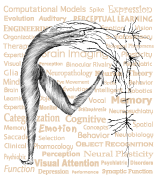Neuroscience & Society
The MacArthur Foundation Law & Neuroscience Project
Neuroscience is a field of biological research that is growing rapidly. Recent discoveries about the human brain are already beginning to influence our legal system, and these applications are bound to increase in coming decades. This website provides information on our Project and is a resource for information on those applications and influences. The Project is supported by the John D. and Catherine T. MacArthur Foundation.
Law and Neuroscience at Vanderbilt
Vanderbilt University, headquarters of the MacArthur Foundation Research Network on Law and Neuroscience , is a leading institution for the study of law and neuroscience. Whether enrolled in law, neuroscience, psychology, or the nation’s first joint JD/PhD program in Law & Neuroscience, students at Vanderbilt have access to unparalleled opportunities at the law/neuroscience intersection. Coursework provides introductions and firm foundations. Faculty afford students opportunities to customize independent studies, to contribute to brain-scanning experimental design and research, and to assist in preparing and revising the first Law & Neuroscience course-book (forthcoming 2012). This page serves as a gateway to learning more about Vanderbilt's central role in the emerging, exciting, and important new field of Law & Neuroscience.
Law and The Brain: A Coursebook
Owen D. Jones, Jeffrey D. Schall, & Francis X. Shen
Vanderbilt University
This is the first law coursebook to cover the emerging and exciting field of law and neuroscience. In the latter stages of development, the book has four main parts. Part I provides introductions and overviews. To spark student interest and to start raising salient issues, it begins with a high-profile case involving a man who, after killing his wife, mounted a "brain defect" defense. Part II provides the basic tools at the intersection of neuroscience, psychology, and law. It introduces: the relationship between law and science; the fundamentals of brain organization and function; the basics of brain-imaging technology; the promise and limitations of that technology; and how to read and understand brain imaging studies. Part III is the core content that includes Evidence; Responsibility; Memory; Lie Detection; Adolescent Brains; Emotions; Moral and Legal Reasoning; Addiction; and Psychopathy. Part IV provides a series of less central but engaging special topics, which represent cutting-edge but optional coverage. These include: Neuroprediction; Brain Death; Health Law; Artificial Intelligence & Neuroprosthetics; Coercion and Drugs; Neuroscience and Tort Law; and Neuroethics. Each chapter has a galvanizing example at the beginning, to focus interest and highlight key features of legal relevance. The balance of each chapter then explores various issues naturally arising from consideration of the opening example. Students will find Law and the Brain to be accessible and user-friendly. No science background is assumed or required, and the examples in each chapter vividly illustrate the relevance of scientific findings to law. The book is being developed for cross-platform use and will incorporate multimedia content and e-reader capabilities.
Owen D. Jones on the Law & Neuroscience Project - Youtube Video
http://www.youtube.com/watch?v=uKg-2fvJZKw

